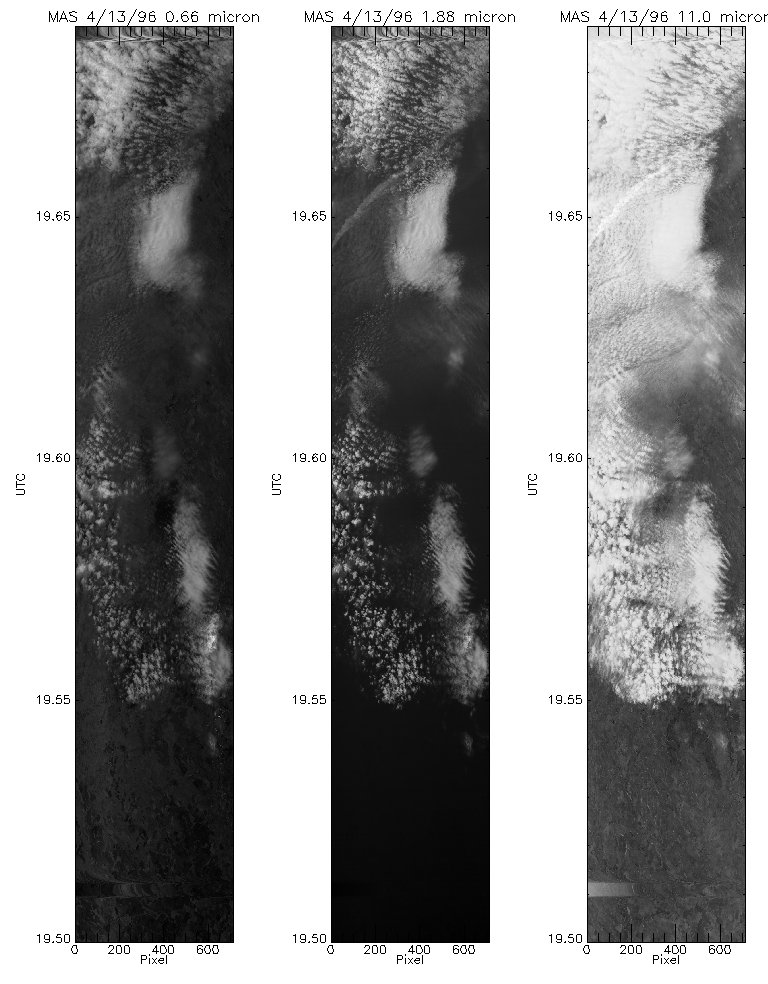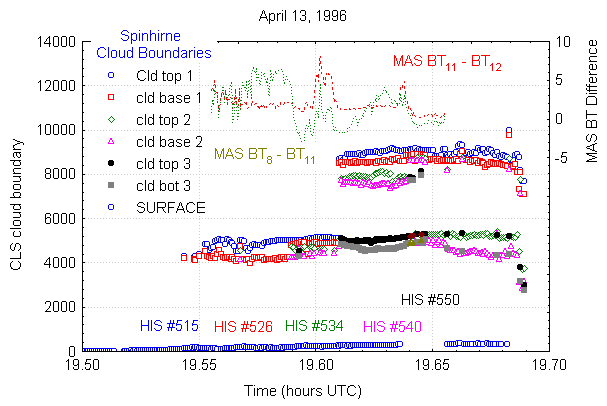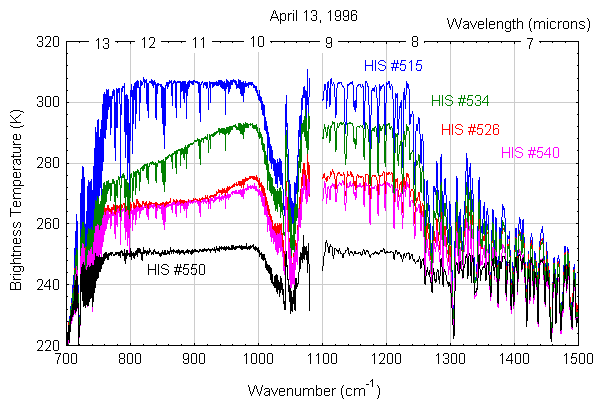
MAS Flight line data for 0.66, 1.88 and 11 microns:


The above figure plots a short time series of CLS derived cloud tops and bottoms and infrared observations from the MAS. The left hand axis is the CLS derived cloud boundary, a quick look product produced in the field by NASA GODDARD (J. Spinhirne). The blue circles and red squares represent the boundaries of the first cloud detected. The first cloud is detected just prior to 19.55 UTC and is approximately 1000 meters thick at 19.57 UTC. The cloud between approximately 5 and 4 km is present during most of this time section. Shortly after 19.6 UTC three layers of cloud are detected by the lidar. The upper most clouds are between approximately 9 and 7 km. The green diamonds and magenta triangles denote the second cloud detected from the ER-2 altitude and retrieved by the lidar algorithm. The solid black circles and filled gray squares are the third layer detected by the lidar (the lidar algorithm detects a maximum of 5 cloud layers). The blue circles are a surface return signal. The surface signal (e.g. approximately 19.65 UTC) is not seen in optically thick clouds.
The right hand y-axis denotes the observed brightness temperature differences observed by the MAS. The dotted red line is the 11 micron minus 12 micron temperature difference and the dotted green line BT8-BT11 differences. Differences between these channels are used to detect cloud and determine phase of the water. Negative differences in BT8-BT11 usually occur in clear sky conditions.
The bottom of this figure lists the approximate locations of HIS observations in terms of HIS record number. They are color coded with the figure below which displays HIS observed radiances converted to brightness temperatures as a function of wavenumber (inverse cm -- bottom axis) and wavelength (micron -- top axis). HIS spectra number 515 was measured at 19:32:30 UTC and is of a clear sky scene as shown by the lidar and MAS imagery. Spectral signatures of many gases are evident in these measured radiation spectra. At 19:34:36 UTC HIS spectra # 526 displays a spectral signature observed for ice cloud conditions. This is consistent with the large BT8-BT11 and BT11-BT12 differences observed by the MAS. HIS spectra #534 (19:36:15 UTC) displays an approximately 20 degree K temperature difference between 10 and 12 microns. MAS brightness temperature differences are also large at this time and correspond to the cloud shown in the following MAS image. HIS spectra #540 (19:37:43 UTC) is similar to that of #526 and is taken over a multi-level cloud scene as suggested by the lidar data. HIS spectra number 546 (19:38:20 UTC) was taken over a two cloud layer where one of these clouds was thick as indicated by the absence of a CLS surface return.
